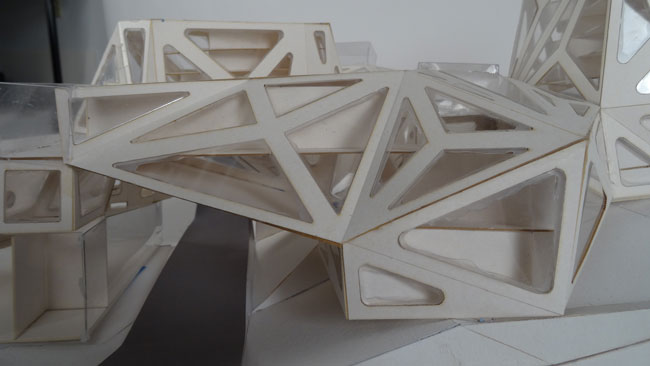Cultivation with Organic Waste Systems
This project began with a case study on successful housing designs. For this, I studied Mies van der Rohe’s Lake Shore Drive buildings. After that research, I began working with Laura Hulse. Together, we created our futuristic thesis on which the design was based.
By the year 2035, the Hudson River will have become too acidic for people to live in close proximity. The residents of Troy will thus be pushed to move up the hill closer to RPI. To mediate the infl ux of people, our building will serve to house both RPI students and Troy residents in a hands-on micro-climate based living situation. Our building will consist of diff erent micro climates, each dependent on the other. These micro-climates will provide food for the residents as the surrounding farms will have been impacted by the acidic river. Additionally, the residents will be responsible for maintaining and studying these micro-climates. Students who inhabit the building will have majors that pertain to studying these micro-climates, creating an interactive living and study environment. Likewise, some residents who will chose to live in the building may be professors or other professionals, integral to the day to day operation of the building. The classroom labs in the building will be used by the residents, RPI students, and public to further research and learn about the different micro-climates and their interaction.
Professor: Edwin Liu
Partner: Laura Hulse
Software: Rhino, Maya, Photoshop, Indesign















































